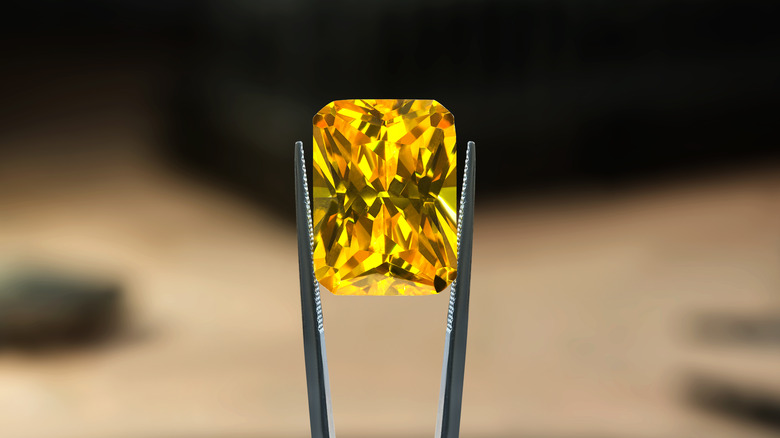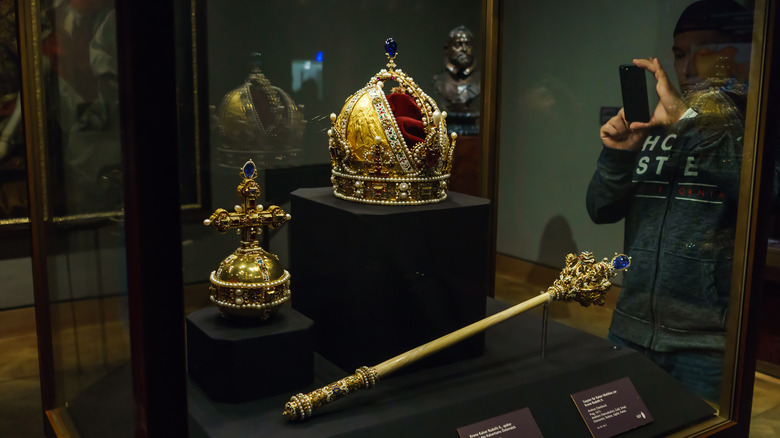The Real Reason We Can't Find The Lost Florentine Diamond
Diamonds can take on a life of their own in our collective imagination. These beautiful, mysterious stones sometimes carry a tragic history, or a curse, like the infamous Hope Diamond. Others, like the Florentine Diamond, have been lost for centuries, frustrating kings and stirring up clouds of rumor and legend.
The Florentine Diamond was — or is; we don't know — a massive jewel originally mined in India. It was yellow with a delicate green tinge. Carved, it weighed over 137 carats, with 126 facets (via The Daily Beast). No one knows quite when the stone was dug up or carved, but according to one legend, by 1477 it had reached Europe, where the wealthy Charles the Bold, Duke of Burgundy, carried it onto the field at the Battle of Nancy, under his armor. Others believe the diamond was carried to Europe from the Portuguese colony of Goa.
By the early 1600s, someone — either the family of the governor of Goa, or whoever found the gem amid the carnage at Nancy — had sold it to the Medici family of Florence. It has been called the Florentine Diamond ever since.
Smuggled to safety, never to be seen
The last Medici to rule Tuscany died in 1737 (per Treccani). His successor married Empress Maria Theresa, ruler of the Holy Roman Empire, matriarch of the imperial Hapsburg family, and a famous connoisseur of jewelry. She immediately added the huge yellow beauty to the Hapsburg family crown jewels, kept in the Hofburg Palace in Vienna.
The Florentine Diamond sat among the crowns, vestments, and cut jewels of the Hapsburgs for almost 200 years, a symbol of that family that ruled almost a third of Europe through wars and upheavals (and which, appropriately for this story, accumulated its fair share of curses.) But when the final reigning Hapsburgs fled from Austria to Switzerland following their defeat in World War I, they smuggled the Florentine Diamond with them. The New York Times, in a 1922 article, estimated the collection to be worth about 25 million Swiss francs.
But what became of it in Switzerland? Nobody knows. One rumor claims that a household servant of the exiled Hapsburgs pocketed the massive gem and slipped away to South America. Another would have it broken into smaller pieces and sold to unsuspecting jewelers for cash. We'll never know for sure, but remember that second story if you're ever perusing the stones in a quaint Swiss jeweler's and see a yellow glint. It might be more mysterious than you know.

